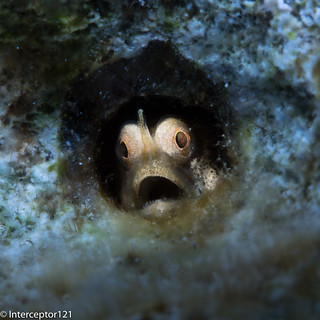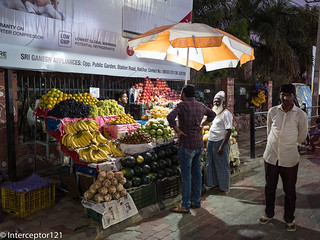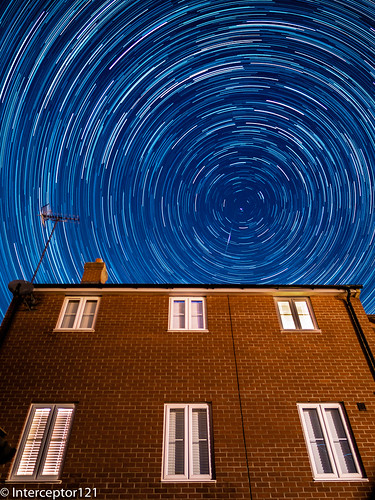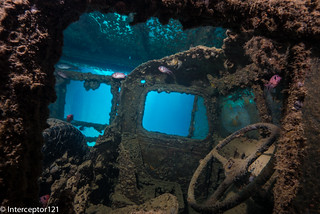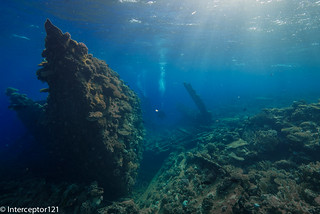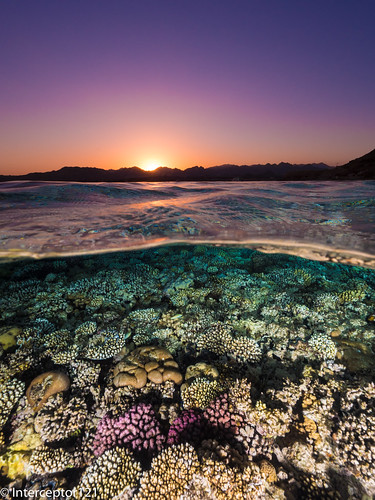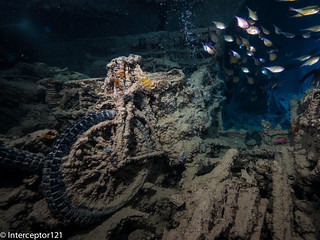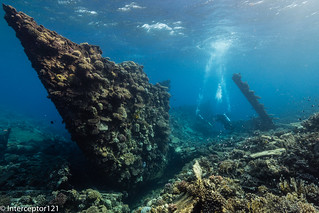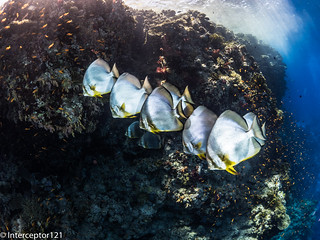There is no doubt that LOG formats in digital cameras have a halo of mystery around them mostly due to the lack of technical documentation on how they really work. In this short article I will explain how the Panasonic V-Log actually works on different cameras. Some of what you will read may be a surprise to you so I have provided the testing methods and the evidence so you can understand if LOG is something worth considering for you or not. I will aim at making this write up self-contained so you have all the information you need here without having to go and search elsewhere, it is not entirely possible to create a layman version of what is after all a technical subject.
Panasonic V-LOG/V-Gamut
A logarithmic operator is a non-linear function that processes the input signal and maps it to a different output value according to a formula. This is well documented in Panasonic V-Log/V-Gamut technical specifications. If you consider the input reflection (in) you can see how the output is related to the input using two formulas:
- IRE = 5.6*in+0.125 (in < cut1 ) *
- IRE = c*log10(in+b)+d (in >= cut1 )
Where cut1 = 0.01, b=0.00873, c=0.241514, d=0.598206
There are few implications of this formula that are important:
- 0 input reflectance is mapped to 7.3% IRE
- Dark values are not compressed until IRE=18%
- Middle Grey (18% reflectance) is still 42% IRE as standard Rec709
- White (90% reflectance) is 61% IRE so much lower than Rec709
- 100% IRE needs input reflectance 4609 which is 5.5 stops headroom for overexposure.
So what we have here is a shift of the black level from 0% to 7.3% and a compression of all tones over 18% this gives the washout look to V-LOG that is mistakenly interpreted as flat but it is not flat at all. In fact the master pedestal as it is known in video or black level is shifted. Another consequence of this formula is that VLOG under 18% IRE works exactly like standard gamma corrected Rec709 so it should have exactly the same performance in the darks with a range between 7.3% and 18% instead of 0-18%.
In terms of ISO measured at 18% reflectante V-LOG should have identical ISO value to any other photo style in your camera this means at given aperture and exposure time the ISO in a standard mode must match V-LOG.
When we look at the reality of V-LOG we can see that Panasonic sets 0 at a value of 50% IRE so generally ⅔ to 1 full stop overexposed this becomes obvious when you look at the waveform. As a result blacks are actually at 10% IRE and whites at 80% once a conversion LUT is applied.

Challenges of Log implementation
LOG conversion is an excellent method to compress a high dynamic range into a smaller bit depth format. The claim is that you can pack the full sensor dynamic range into 10 bits video. Panasonic made this claim for the GH5s and for the S1H, S5.
There is however a fundamental issue. In a consumer digital camera the sensor is already equipped with a digital to analog converter on board and this operates in a linear non log mode. This means the sensor dynamic range is limited to the bit depth of the analog to digital converter and in most cases sensors do not even saturate the on board ADC. It is true that ADC can also resolve portions of bits however this does not largely change the picture.
If we look at the sensor used in the S1H, S5 this is based on a Sony IMX410 that has saturation value of 15105 bits or 13.88 stops of dynamic range. The sensor of the GH5s which is a variant of Sony IMX299 has a saturation of 3895 (at 12 bits) or 11.93 stops.
None of the S1H, S5 or GH5s actually reaches the nominal dynamic range that the ADC can provide at sensor level. The sensor used by the GH5 has more than 12 stops dynamic range and achieves 12.3 EV of engineering DR, as the camera has 12 bits ADC it will resolve an inferior number of tones.
So the starting point is 12 or 14 stops of data to be digitally and not analogically compressed into 10 bits coding. Rec709 has a contrast ratio requirement of 1000:1 which is less than 10 stops dynamic range. This has not to be confused with bit depth. With 8 bits depth you can manage 10 stops using gamma compression. If you finish your work in Rec709 the dynamic range will never exceed log2(1000)=9.97 stops. So when you read that rec709 only has 6.5 stops of DR or similar it is flawed as gamma compression squeezes the dynamic range into a smaller bit depth.
When we look at a sensor with almost 14 stops of dynamic range the standard rec709 gamma compression is insufficient to preserve the full dynamic range as it is by default limited to 10 stops. It follows that logically LOG is better suited to larger sensors and this is where it is widely used by all cinema camera manufacturers.
In practical terms the actual photographic dynamic range (this is defined as the dynamic range you would see on a print of 10″ on the long side at arm length), the one you can see with your eyes in an image, is less than the engineering value. The Panasonic S5 in recent tests showed around 11.5 stops while the GH5S is around 10 and the GH5 9.5 stops of dynamic range. Clearly when you look at a step chart the tool will show more than this value but practically you will not see more DR in real terms.

This means that it is possible that a standard gamma encoded video in 10 bits can be adequate in most situations and nothing more is required. There is also a further issue with noise that the log compression and decompression produces. As any conversion that is not lossless the amount of noise increases: this is especially apparent in the shadows. In a recent test performed with a S5 in low light and measured using neat-video assessment V-Log was one of the worst performed in terms of SNR. The test involved shooting a color checker at 67 lux of ambient illumination and reading noise level on the 4 shadows and darks chips. Though this test was carried out at default setting it has to be noted that even increasing the noise reduction in V-LOG does not eliminate the noise in the shadow as this depends on how V-LOG is implemented.
The actual V-Log implementation
How does V-LOG really work? From my analysis I have found that V-Log is not implemented equally across cameras, this is for sure a dependency on the sensor performance and construction. I do not know how a Varicam camera is built but in order to perform the V-Log as described in the document you need a log converter before the signal is converted to digital. In a digital camera the sensor already has an on board ADC (analog to digital converter) and therefore the output is always linear on a bit scale of 12 or 14 bits. This is a fundamental difference and means that the math as illustrated by Panasonic in the V-LOG/V-Gamut documentation cannot actually be implemented in a consumer digital camera that does not have a separate analog log compressor.
I have taken a test shot in V-LOG as well as other standard Photo Styles with my Lumix S5 those are the RAW previews. V-LOG is exactly 2 2/3 stops underexposed on a linear scale all other parameters are identical.


What is happening here? As we have seen ISO values have to be the same between photo styles and refer to 18% middle grey however if you apply a log conversion to a digital signal this results in a very bright image. I do some wide field astrophotography and I use a tool called Siril to extract information from very dark images this helps visualise the effect of a log compression.
The first screenshot is the RAW file as recorded a very dark black and white image as those tools process separately RGB.

The second image shows the same RAW image with a logarithmic operator applied; this gives a very bright image.

Now if you have to keep the same middle grey value exposure has to match that linear image so what Panasonic does is to change the mapping of ISO to gain. Gain is the amplification on the sensor chip and has values typically up to 24-30 dB or 8 to 10 stops. While in a linear image the ISO would be defined as 100 at zero gain (I am simplifying here as actually even at 100 there will be some gain) in a log image zero gain corresponds to a different ISO value. So the mapping of ISO to gain is changed. When you read that the native ISO is 100 in normal mode and 640 in V-LOG this means that for the same gain of 0 dB a standard image looks like ISO 100 and a V-LOG image looks like ISO 640, this is because V-LOG needs less gain to achieve the same exposure as the log operator brightens the image. In practical terms the raw linear data of V-LOG at 640 is identical to an image taken at 100.
This is the reason why when a videographer takes occasional raw photos and leaves the camera in V-LOG the images are underexposed.
The benefit of the LOG implementation is that thanks to log data compression you can store the complete sensor information in a lower bit depth in our case this means going from 14 to 10 bits.
There are however some drawbacks due to the fact that at linear level the image was ‘underexposed‘, I put the terms in italic as exposure only depends on time and aperture of the lens, so in effect is lack of gain for which there is no term.
The first issue is noise in the shadows as those on a linear scale are compacted, as the image is underexposed: a higher amount of noise is present and this is then amplified by the LOG conversion. It is not the case that LOG does not have noise reduction, in fact standard noise reduction expects a linear signal gamma corrected and therefore could not work properly (try setting a high value in V-LOG on a S camera to see the results), the issue is with the underexposure (lack of gain) of the linear signal.
There are also additional side effects due to what is called black level range, I recommend reading on photonstophotos a great website maintained by Bill Claff. When you look at black levels you see that cameras do not really have pure black but have a range. This range results in errors at the lower scale of the exposure; the visible effect is colour bleeding (typically blue) in the shadows when there is underexposure. As V-LOG underexposed in linear terms you will have issues of colour bleeding in the shadows: those have been experienced by several users so far with no explanation.
The other side effect is that the LUT to decompress V-LOG remains in a 10 bit color space which was insufficient to store the complete dynamic range data and this does not change. So the LUT does not fully reverse the log compression in Panasonic case this goes into the V709 CineLike Gamma which is in a Rec709 gamma. As the full signal is not decompressed means that there are likely errors of hue accuracy so V-LOG does not have a better ability to reproduce accurate colors and luminance and this is the reason why even after a LUT is applied it needs to be graded. If you instead decompress V-LOG in a log space like Rec2020 HDR you will see that it does not look washed out at all and colors are much more vibrant as the receiving space has in excess of 20 stops.
Some users overexpose their footage saying they are doing ETTR. Due to the way log is implemented this means it will reach a clipping point sooner and therefore the dynamic range is no longer preserved. This is a possible remedy to reduce the amount of noise in low light however the log compression is not fully reversed by the LUT that is expecting middle grey exposure and therefore color and luminance accuracy errors are guaranteed. If you find yourself regularly overexposing V-LOG you should consider not using it at all.
Shadow Improvement and input referred noise
The Lumix cameras with dula gain sensor have a different behaviour to those without. This is visible in the following two graphs again from Bill Claff excellent website.

The first is the shadow improvement by ISO here you can see that while the GH5/G9 stay flat and are essentially ISO invariant, the GH5S and S5 that have a dual gain circuit have an improvement step when they go from low to high gain. What changes here is due to the way the sensors of the GH5s and S5 are constructed, the back illumination means that when the high gain circuit is active there is a material improvement in the shadows and the camera may even have a lower read noise at this ISO (gain) point than it had before because of this.
Another benefit of dual gain implementation is easier to understand when you look at input referred noise graphs. You can see that as the sensor enters the dual gain zone the input referred noise drops. Input referred noise means the noise that you would need to feed as an input to your circuit to produce the same noise as output. So this means when that step is passed the image will look less noisy. Again you can see that while the GH5 stays relatively flat the GH5s and S5 have a step improvement. Is it is not totally clear what happens in the intermediate zone for the GH5s possibly intermediate digital gain or more noise reduction is applied.

The combination of a certain type of sensor construction and dual conversion gain can be quite useful to improve shadows performance.
Do not confuse dual gain benefit with DR preservation, while dual gain reduces read noise it does not change the fact that the highlights will clip as gain is raised. So the effective PDR reduces in any case and is not preserved. The engineering DR is preserved but that is only useful to a machine and not to our eyes.
Now we are going to look at specific implementation of V-LOG in various camera models.
Front Illuminated 12 bits Sensors
Those are traditional digital cameras for photos and include the GH5, G9 for example. On those cameras you will see that the V-Log exposure shows a higher ISO value of 1 stop compared to other photo styles at identical aperture and shutter speed setting but the actual result is the same in a raw file so your RAW at 400 in VLOG is the same of another photo style at 200. This is a direct contradiction of Panasonic own V-Log model as the meter should read the same in all photo styles so something is going on here. As there is no underexposure it follows that there is no real log compression either. Those cameras are designed in a traditional way so low ISO (gain) is good high ISO (gain) is not. This is visible in the previous graphs.
Those screenshot show how the raw data of an image taken at ISO 250 in standard mode is identical to the V-LOG image and therefore shows how there is not LOG compression at all in the GH5. V-LOGL of the GH5 is therefore just a look and does not have any increase of dynamic range compared to other photo styles.



Is this version of V-LOGL more effective than other photo style with a compressed gamma like CineLikeD? According to Panasonic data CineLikeD has 450% headroom so it is already capable of storing the whole dynamic range that the GH5 can produce (450% means 12.13 stops vs 12.3 theoretical maximum).
In addition noise performance of V-Log is worse because all is doing is acting on shadows and highlights and not really doing any log conversion. The business case for acquiring a V-Log key on those cameras is limited if the objective was to preserve dynamic range as the camera already has this ability with photo styles included with the camera and moreover the V-LOG is not actually anything related to LOG compression otherwise the image would have needed to have less gain and would have shown underexposed. The fact that the camera is shooting at nominal ISO 400 means most likely that some form of noise reduction is active to counter the issue that V-Log itself introduces of noise in the shadows. So in this type of camera V-LOG is only a look and does not accomplish any dynamic range compression.
Back Illuminated 12 bits readout sensors
The cameras that have this technology are the GH5s and the BGH1, the back illumination gives the sensor a better ability to convert light into signal when illumination levels are low. Those cameras have actually a sensor with an 14 bits ADC but this is not used for video.
In order to decompose the procedure I have asked a friend to provide some RAW and Jpeg images in Vlog and normal. You can see that in the GH5s there is 1 stop underexposure and therefore a light form of log compression.



In the GH5s implementation the camera meters zero at the same aperture shutter and ISO in LOG and other photo styles and zero is 50% IRE so actually is 1 stop overexposed.
The procedure for V-Log in this cameras is as follows:
- Meter the scene on middle grey + 1 stop (50%)
- Reduce gain of the image 1 stop behind the scenes (so your 800 is 400 and 5000 is 2500)
- Digital log compression and manipulation
As the underexposure is mild this means the log compression is also mild as it is only recovering 1 stop as the two effect cancels this is actually a balanced setting.
The IMX299 dual gain implementation was a bit messed up in the GH5s but has been corrected in the BGH1 with the values of 160 and 800. It is unclear what is happening to the GH5s and why Panasonic declared 400 and 2500 as the dual gain values as those do not correspond to sensor behaviour, perhaps additional on sensor noise reduction only starts at those values or just wanting to make a marketing statement.
Back Illuminated 14bits Sensors
Here we have the S1H and S5 that have identical sensors and dual gain structure.
The metering behaviour on the S series is the same as the GH5s so all photo styles result in identical metering. The examples were at the beginning of this post so I am not going to repeat them here.
Now the gain reduction is 2 and ⅔ stops which is significant. After this is applied a strong log compression is performed. This means that when you have ISO 640 on the screen the camera is actually at gain equivalent to ISO 100 and when you have 5000 is at 640 resulting in very dark images. In the case of the S5/S1H VLOG does offer additional dynamic range not achievable with other photo styles.
Interestingly V-Log on the S series does achieve decent low light SNR despite the strong negative gain bias. Here we can see that the Log implementation can be effective however other photo styles that do not reduce gain may be a better choice in low light as gain lifts the signal and improves SNR. It is also important to note that the additional DR of VLOG compared to other photo styles is in the highlights so it only shows on scenes with bright areas together with deep darks this was noted on dpreview and other websites.
Should you use V-LOG?
It looks like Panasonic is tweaking the procedure for each sensor or even camera as they go along. The behind the scenes gain reduction is really surprising however it is logical considering the effect of a log compression.
Now we can also see why Panasonic calls the GH5s implementation V-LOGL as the level of log compression is small only 1 stops as opposed to VLOG in the S series where the compression is 2 ⅔ stops. We have also seen that V-LOG, at least in a digital consumer camera with sensor with integrated ADC, has potentially several drawbacks and those are due to the way a camera functions.
Looking at benefits in terms of dynamic range preservation:
- GH5/G9 and front illuminated sensor: None
- GH5s/BGH1 back illuminated MFT: 1 stop
- S5/S1H full frame: 2 ⅔ stops
What we need to consider is that changing the gamma curve can also store additional dynamic range in a standard video container. Dpreview is the only website that has compared the various modes when they reviewed the Panasonic S1H.
A particularly interesting comparison is with the CineLikeD photo style that according to Panasonic can store higher dynamic range and is also not affected by the issues of V-LOG in the shadows or by color accuracy problems due to log compression. The measures of dpreview show that:
- On the GH5s V-LOG has 0.3 stops benefits over CineLikeD
- On the S1H V-LOG has a benefit of 0.7 stops over CineLikeD2
Considering the potential issues of noise and color bleeding in the shadows together with hue accuracy errors due to the approximation of the V-LOG implementation I personally have decided not to use V-LOG at all for standard dynamic range but to use it for HDR footage only as the decompression of V-LOG seems to have limited to no side effects. In normal non HDR situations I have shot several clips with V-LOG but I never felt I could not control the scene to manage with other photo styles and the extra effort for a maximum benefit of 0.7 Ev is not worth my time nor the investment in noise reduction software or the extra grading effort required. As HDR is not very popular I have recently stopped using V-LOG altogether due to lack of support of HDR in browsers for online viewing.
Obviously this is a personal consideration and not a recommendation however I hope this post helps you making the right choices depending on what you shoot.
This write up is based on my analysis on Panasonic V-LOG and does not necessarily mean the implementation of other camera manufacturers is identical however the challenges in a digital camera are similar and I expect the solutions to be similar too.




